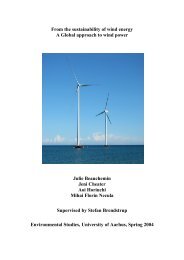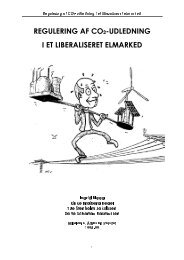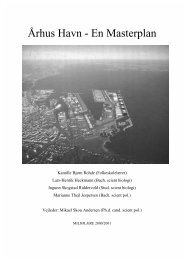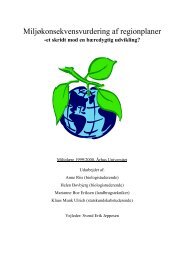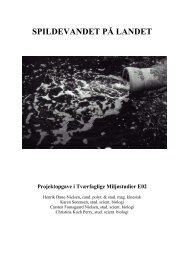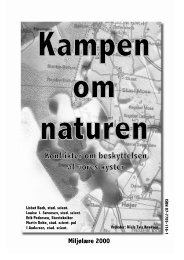University of Aarhus ECOTOURISM AS A WAY TO PROTECT ...
University of Aarhus ECOTOURISM AS A WAY TO PROTECT ...
University of Aarhus ECOTOURISM AS A WAY TO PROTECT ...
You also want an ePaper? Increase the reach of your titles
YUMPU automatically turns print PDFs into web optimized ePapers that Google loves.
Ecotourism as a sustainable way to protect nature<br />
ecotourism. Mining companies were promising 2,000 jobs and it has always<br />
been there. The situation was very difficult because environmental organisations<br />
had to convince natives that the traditional “white conservationist power”<br />
wanted to help them. This means that natives can work in a short-term activity<br />
as mining, which is the African government favourite or in a long-term activity<br />
as conservation/ecotourism, etc. But at the time they solved the problem, not<br />
promising the panacea, but giving the exact information, they got a win-win<br />
situation.<br />
Sadly, not all examples are successful. In St. Lucia Game Reserve (in<br />
South Africa too) the battle against titanium and heavy metals mining was long<br />
and with no happy end. Convincing natives was not possible prevailing the<br />
“Black” idea about conservationist as exposed in Honey M., 1999. “Why all <strong>of</strong> a<br />
sudden is there all this activity and protest to save animals when there was no<br />
reaction at the time when people faced removal Is it because this time, there is<br />
a treat to the survival <strong>of</strong> a favourite holiday resort for whites”<br />
Another economical problem is that not all national parks in Africa give<br />
benefits although this is not the case with KNP. This park not only has benefits<br />
but it helps to finance other parks.<br />
3.2.7. Conservation/tourism<br />
Conservation has caused several problems, maybe because <strong>of</strong><br />
inexperience. Attracting people is not always an easy job, but it is known that<br />
tourists travel to see the animals, which now are called “the big five”: elephants,<br />
rhinos, leopards, buffaloes and lions. Sometimes, the population <strong>of</strong> these<br />
animals moves to other sites looking for food. Now they have been removed<br />
back into the National Parks to attract tourists. It is known that one <strong>of</strong> the<br />
reasons for tourists' unhappiness in visiting the national park (as commented) is<br />
that they were not able to see the animal they wanted. Then special places to<br />
67





